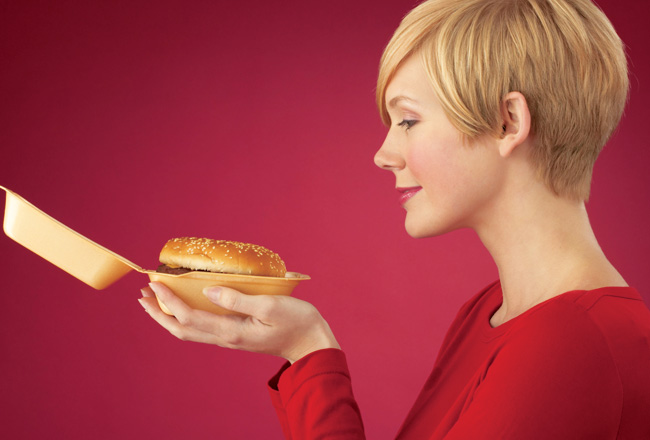Lizard Spit And Weight Loss
In the southwestern United States lives a unique animal called the Gila monster. What is so unique about this lizard-like creature is the fact that it only eats three times a year. Why does it only get hungry every four months? Scientists, in the never-ending search for new medications, began to study the Gila monster. What they have come up with is truly remarkable.
The saliva of the animal contains a chemical that is enhancing the lives of many diabetics. What this chemical, called glucagon-like peptide-1 (GLP-1), does for diabetics is the latest breakthrough in the fight against this disease. One of the benefits is the increase of glucose-dependent insulin secretion. This mimics our own body's response to food; releasing insulin only when we need it. This process greatly reduces the peak and valley insulin levels usually associated with conventional insulin injections. It also increases the function of the insulin producing cells in the body.
The real breakthrough in this chemical is what is called beta-cell neogenesis. Beta-cells are located on the pancrease and are responsible for the release of insulin into the body. In a diabetic person, these beta-cells either die or stop producing insulin. This chemical actually causes the body to make more beta-cells. This is truly the beginning of a cure.
So where does the weight loss come into play? A side effect is decreased gastric emptying; meaning the food you eat stays in your stomach longer, up to four times longer. So your body is telling you that you are ?full? for a longer time, because you are full. It also works on the part of the brain that causes pleasure when eating. Many people overeat because of the pleasurable sensation they receive, perceived or not. GLP-1 decreases this pleasure enough to make people just ?not feel like eating any more? than is necessary for survival.
In real life studies, GLP-1 is shown to cause a 10% to 15% decrease in overall body weight. Because of the food staying longer in the stomach, many people feel nauseous after eating. This feeling usually goes away after a couple days and is generally caused by eating too much. The stomach is not moving the food through the digestive system causing a ?back-up? of the system. Many people are used to eating a certain amount of food at each meal. With this drug, you will feel ?full? faster and therefore eat less.
The drug is called Byetta (exenatide) and is marketed because it is the first medication that may enable patients with type 2 diabetes to achieve glycemic control while reducing or eliminating the risk of hypoglycemia and weight gain. It is injectable only and the monthly cost is approximately $200 and must be kept refrigerated until administered.
In the southwestern United States lives a unique animal called the Gila monster. What is so unique about this lizard-like creature is the fact that it only eats three times a year. Why does it only get hungry every four months? Scientists, in the never-ending search for new medications, began to study the Gila monster. What they have come up with is truly remarkable.
The saliva of the animal contains a chemical that is enhancing the lives of many diabetics. What this chemical, called glucagon-like peptide-1 (GLP-1), does for diabetics is the latest breakthrough in the fight against this disease. One of the benefits is the increase of glucose-dependent insulin secretion. This mimics our own body's response to food; releasing insulin only when we need it. This process greatly reduces the peak and valley insulin levels usually associated with conventional insulin injections. It also increases the function of the insulin producing cells in the body.
The real breakthrough in this chemical is what is called beta-cell neogenesis. Beta-cells are located on the pancrease and are responsible for the release of insulin into the body. In a diabetic person, these beta-cells either die or stop producing insulin. This chemical actually causes the body to make more beta-cells. This is truly the beginning of a cure.
So where does the weight loss come into play? A side effect is decreased gastric emptying; meaning the food you eat stays in your stomach longer, up to four times longer. So your body is telling you that you are ?full? for a longer time, because you are full. It also works on the part of the brain that causes pleasure when eating. Many people overeat because of the pleasurable sensation they receive, perceived or not. GLP-1 decreases this pleasure enough to make people just ?not feel like eating any more? than is necessary for survival.
In real life studies, GLP-1 is shown to cause a 10% to 15% decrease in overall body weight. Because of the food staying longer in the stomach, many people feel nauseous after eating. This feeling usually goes away after a couple days and is generally caused by eating too much. The stomach is not moving the food through the digestive system causing a ?back-up? of the system. Many people are used to eating a certain amount of food at each meal. With this drug, you will feel ?full? faster and therefore eat less.
The drug is called Byetta (exenatide) and is marketed because it is the first medication that may enable patients with type 2 diabetes to achieve glycemic control while reducing or eliminating the risk of hypoglycemia and weight gain. It is injectable only and the monthly cost is approximately $200 and must be kept refrigerated until administered.
-
The Goal of a Healthy Diet Plan and Binging
Commit to Change Without doubt binging behavior can be a challenge
-
Is The Cure Herbal Weight Loss Pills?
Obesity is a common problem among men and women all over the world. Ov
-
Steps For Weight Loss
You are in a race for time to complete a
-
How the Media Can Affect Your Body Image and What You Eat
The other day while waiting at the register in a local pharmacy I s
-
Developing Mental Toughness For Permanent Weight Loss
Losing weight and keeping it off is much more than eating right and ex
-
7 Strange and Unusual Ways That Can Help You Lose Weight
We all know that the solution to weight loss is diet and exercise. By
- DON'T MISS
- How to Start Loosing Unwanted Weight
- Are There Ways to Increase Metabolism Naturally?
- Weight Loss Methods Its Advantage Natural Therapy
- 5 Reasons to Lose the Pregnancy Weight !
- Weight Loss Miracle - Self-hypnosis Plus The Suddenly Slim Diet
- Natural Weight Loss Methods Versus Unnatural Weight Loss Methods
- How To Naturally Turn Your Slow Metabolism Into A Fast Fat Burning Machine
- Be Fit As A Woman Over Forty - Use These Top Expert Tips To Trick Yourself Into Losing Belly Fat
- Does Circuit Training Fitness Equipment Help Mens Health Too?
- Calorie Cutting Tips




